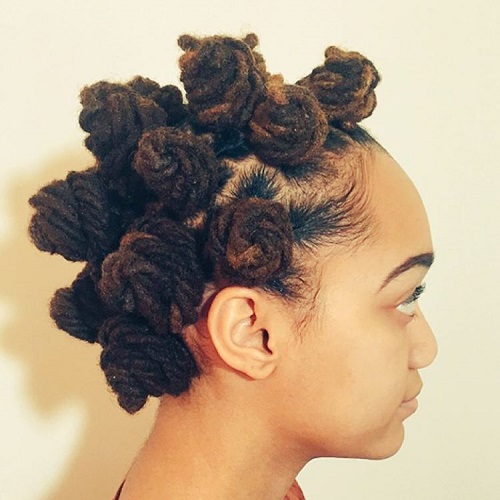


European colonialists first made contact with the Abantu in the early 17th century but didn't rename them the Bantu until the mid-19th century.Īs previously mentioned, "Bantu" is a Zulu word meaning "people." Bantu is the plural form of the Zulu word "umuntu," which means "person. The Bantu people were initially known as the "Abantu" but were renamed the Bantu by European colonialists. "Bantu" is a word that describes an African ethnic group and the term "people." The word was coined by the Zulu people of Africa, themselves a part of the Nguni ethnic group. When you wear Bantu locs, you are wearing the history of colonial Africa on your head, whether you know it or not. Since many ethnicities have culturally appropriated the Bantu knot hairstyle, let's briefly discuss the origin and history of the word. Related: What To Know About Maintaining Frizzy Dreads History of the Bantu and the Origins of the Bantu Knot Our products are all-natural, organic, and vegan. Lion Locs produces the best dreadlock grooming products in the industry. And if you rock the Bantu loc style, we hope that you would want to know about it. Too many people use and appropriate this sacred hairstyle without appreciating its history or people. Here is what you must know now about the Bantu knot and its origins in Africa. And depending on how you use the word in Africa today, the word can be considered an insult to some. The Bantu knot and even the word "Bantu" are heavily burdened with African history.
#Bantu knotes how to
Now that you know how to make a basic Bantu knot, it is essential to discuss the hairstyle's history. Then, just tuck the ends of your locs under the knot to keep the style in place. And then wrap the remainder of the loc strands around the coil as you form the Bantu knot.ĭon't twist or coil or wrap your locs too tightly. Twist and coil each section of loc strands until you form a small coil in the center. The larger the box-shaped section, then the larger the resulting Bantu knot will be. Then, section the hair on your scalp into box-shaped sections. Wash your locs with organic clarifying shampoo and dry them out entirely.

Don't force the style or wrap it too tight on your head. However, your dreadlocks should be at least six inches long before you try styling them into Bantu knots. You don't necessarily need long dreadlocks to make Bantu knots, but having long dreadlocks will give you more aesthetic style options. There are a few ways to style and wear Bantu loc knots, but let's first discuss the basic style. The striking aesthetic appeal of the Bantu knot is achieved by wrapping three, four, five, or six knots on an entire head, with the flatness of the scalp between the knots enhancing the style. A Bantu knot can be pyramid or tube-shaped in appearance. If you have dry scalp, oiling and massaging your scalp with oil helps prevent any itchiness (olive oil, tea tree oil, peppermint oil etc.Bantu knots are short, tree-stump-like spiral knots of hair wrapped around itself.
#Bantu knotes free
Duru uses a blow dryer to dry her hair quicker but feel free to utilize the heatless route of letting your hair air dry. Again, it’s important for your hair to be dry for this style. This works best on dry hair since it would take awhile to dry with wet hair.Ĭhizi Duru (1:30) shows how she does a beautiful bantu knot on her 4c tresses. It’s best to detangle, add the product then slide the bobbie pin in. What you want to do is wrap your hair around your finger like a curling wand then pin. Jessica shows a different technique from the old fashion bantu knot. Here are 3 different tutorials to rock bantu knots and make them pop! Bantu knots give me that simple curl with the least effort. This brings me to the Good ol’ Bantu Knots. However, as we enter the fall season it’s time to think about styles that can work while before all of the moisture is gone from the air. We still have a little more time before the weather changes and before we bring out the boots ( I can’t wait).


 0 kommentar(er)
0 kommentar(er)
